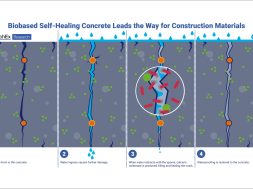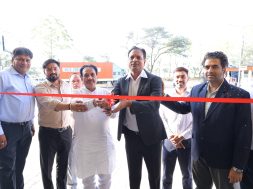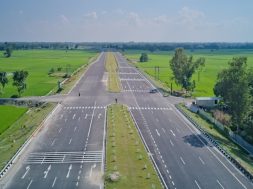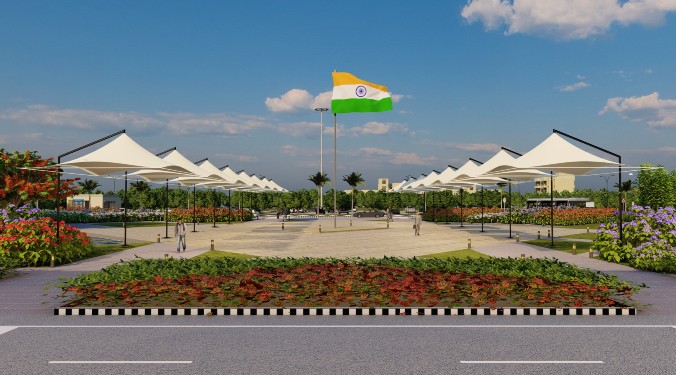“We are confident that the new government will provide clarity on policies going forward, and will address issues facing the industry,” says Anand Sen, President, TQM and Steel Business, Tata Steel
India is currently the fourth largest producer of crude steel in the world, contributing 5.05 per cent of the global production of crude steel in 2013, and targets to become the second largest producer by 2025. In an e-mail interaction with ACE UPDATE, Anand Sen talks on the status of steel industry in India, its bottlenecks and Tata Steel’s strategy. He also points out the new government’s top most priority.
The Govt of India sets a target of 300 MT capacity for steel production by 2025 from around 90 MT now. Is it an achievable target? A high rate of economic growth coupled with high infrastructure spending has meant that countries such as China have been able to take over as the world’s leading manufacturing hub. This indicates that driving growth in India is not possible without a rise in the infrastructure and manufacturing sectors. These sectors in turn are dependent on steel. Therefore it is imperative to strengthen demand and drive growth in this vital foundation industry.
There is a close correlation between GDP growth and growth in steel demand. For the GDP to grow at 7 per cent, it is estimated that the steel sector has to grow at 8 to 10 per cent per year. However, if the focus on infrastructure outlined in the 12th Five-Year Plan document is achieved, steel demand will increase at a much higher rate.
The current steel production of India stands at 90 mn TPA and the earlier government has set up an ambitious target of 300 mnTPA by 2025. India is currently the fourth largest producer of crude steel in the world, contributing 5.05 per cent of the global production of crude steel in 2013, and is expected to become the second largest producer by 2025. The size of the steel industry in 2011 was $ 57.8 billion and is projected to touch $ 95.3 billion by 2016.
The demand in the market needs to spurt up to trigger an increase in the production capacity. We at Tata Steel are on our way to add 6 mnTPA (in two phases) of crude steel production at our greenfield project at Kalinganagar which is in addition to the augmentation of the production at our Jamshedpur plant up to 9.7 mnTPA.
Despite ambitious projections, India remains short of projections. Could you brief us on the bottlenecks for the steel industry in India? Can we expect end to this misery soon?The growth in the steel industry in India has been encouraging but still there are lot of hurdles which are affecting the steady growth. The industry is trying to address the bottlenecks which also need continuous support from the government. Some of the major bottlenecks of steel industry are:
Raw material securityIn order to produce 300 mnt of steel by 2025-26, the industry would need 480 mt of iron ore and 240 mt of coal. Extraction of ore will have to increase by at least another 50 per cent if the iron ore requirement is to be met assuming all of the domestic ore is used in India. However, there are concerns that this may not be possible if all efforts are not undertaken to bring efficiency into the raw material exploration and extraction process, and to speed up clearances for companies that are well-equipped to practice sustainable mining, so that new iron ore and coal projects are brought on stream. Policies related to the export of iron ore needs to be pragmatically looked at as it is important to ensure that critical raw materials like iron ore are made available to domestic industry in the long-term.
Raw material costsRaw materials contribute significantly of total costs for the steel industry. Firm raw material prices will therefore help control costs. Higher steel costs would hurt the entire value chain in sectors such as infrastructure and the capital goods industry. Forest and environmental clearancesThere need to be steps taken by the Ministry of Environment and Forests as well as respective state governments to establish clarity in turnaround times for environmental and forest clearances for iron ore and coal mining projects to enable these projects to complete on time
Land acquisition Steel being a capital intensive sector, it takes almost 10 years to complete Greenfield projects. India has not been able to bring too many major Greenfield projects in India in the sector primarily because of land and statutory clearances. Though, the current Land Acquisition Rehabilitation and Resettlement (LARR) Act, removes decade-long state of ambiguity over the land acquisition process in the country it is apprehended that the land acquisition would require longer time due to complex process and multiple public consultations required.
The creation of land banks across States for industrial purposes with a transparent mechanism to allocate the same to the private sector can be done through the creation of a special nodal body that can identify unused, fallow, barren and non-cultivable land for such purposes.
Government can also encourage and facilitate the creation of steel clusters especially for small and medium enterprises
Tax structureThe steel industry has a high level of dependence on imported equipment such as industrial machinery, process plant equipment, construction and mining equipment and electrical equipment, as many of these are not manufactured in India. These equipment still attract customs duties or CENVAT. Duties are typically imposed to encourage the local industry, but in this case, are counterproductive. The duties raise cost of steelmaking, which leads to higher domestic prices of this critical industrial input. There is thus, a need to revisit these duties and eliminate them altogether.
Being a pioneer in this industry, what is Tata Steel’s approach in dealing with the current situations?We at Tata Steel are committed to capacity expansion to produce high grade steel for the industry. We are closing on the first phase of the 6 MnTPA Kalinganagar plant which will start producing 3 MnTPA of crude steel in its first phase. We have successfully completed the expansion at the Jamshedpur plant which is presently operating at a capacity of 9.7 MnTPA with the commissioning of the Coke Oven Battery# 11.
Tata Steel is the first integrated steel company to win the world’s highest award of quality. Tell us about your TQM strategy to win this award.Tata Steel has been practising TQM since the late 1980s which was when the company initiated several quality activities – quality circles, ISO certification, quality improvements using Juran methods, etc. After winning the JRD QV Award in 2000, the question we faced was how to achieve the next quantum jump in performance and improvements. By going through the Deming process, we discovered the deeper meaning of TQM.
In 2005, we conducted a TQM diagnosis along with the JUSE team; that gave us the status of our TQM implementation and helped us uncover a lot of areas that required improvement in both our processes and culture.
Also, we involve people in thinking about improvement activities such as quality circles, suggestion management, knowledge manthan, etc.
How is this strategy contributing to your company’s growth?Tata Steel has continued its pursuit of value creation for all stakeholders following the Total Quality Management (TQM) approach.
Our drive towards TQM resulted in several recognitions such as the Tata Business Excellence Model Award, JRD QV Award, Deming Application Prize and Deming Grand Prize. This has enabled the company to address different phases of its business environment and its growth aspirations.
Tata Steel’s bedding, blending and sinter plant has completed 25 years. What were the elements which have contributed to its success?The bedding, blending and sinter plant of Tata Steel has contributed significantly to the journey of Tata Steel enabling the Blast Furnaces to operate at optimum capacityThe BBSP-2, an integral part of the sinter plant and as a part of the modernisation drive of the company in 1988, the BBSP-2 was conceived to augment the sinter production to 2.5 mn tonnes. In 25 years, the division has witnessed its share of crests and troughs while also registering several records.
Finally, what should be the new government’s top most priority as far as steel industry is concerned? We hope that the new government will provide strong governance that would help return the investor confidence and improve the ease to execute business. We are confident that the new government will provide clarity on policies going forward, and will address issues facing the industry, so that our business and the government can work together in harmony to enable the country to attain desired economic growth and prosperity.
Cookie Consent
We use cookies to personalize your experience. By continuing to visit this website you agree to our Terms & Conditions, Privacy Policy and Cookie Policy.









